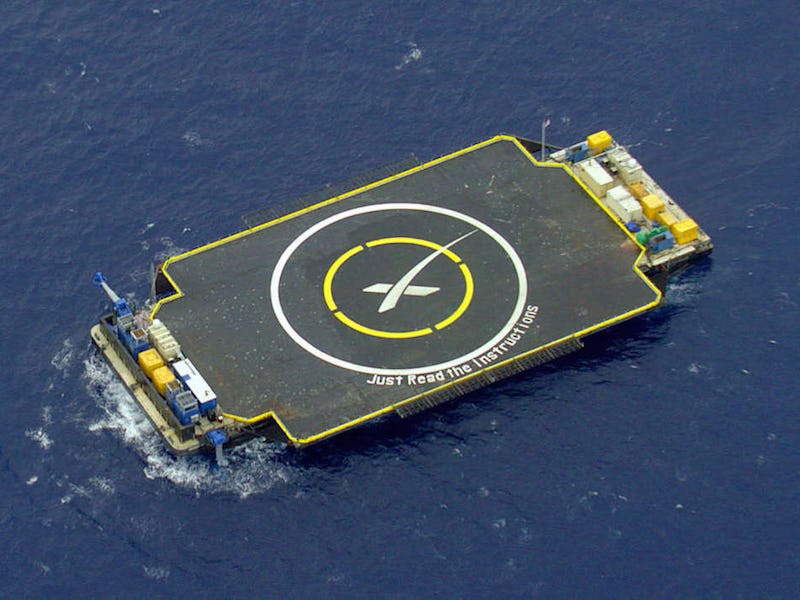SpaceX's Falcon 9 Rocket Crashes on Third Attempt to Land on a Droneship
'Unfortunately we are not standing upright on a droneship.'

SpaceX’s third attempt at an ocean landing for a Falcon-9 rocket has failed.
“It looks like we came in on target as we planned, [and] as we touched down, it was a slightly harder landing than we expected, and it looks like one of the landing legs may have broken as we touched down on the droneship,” SpaceX’s John Federspiel, a lead mechanical engineer, said a little after 2 p.m. Eastern on the webcast of the Jason-3 launch.
“So unfortunately we are not standing upright on a droneship at the moment, but the good news here is the primary mission is still on track.”
On Sunday night, Elon Musk uploaded video of the land-and-tip-over:
At 1:42 Eastern, SpaceX Falcon-9 successfully launched from Space Launch Complex 4E at Vandenberg Air Force Base, California:
The goal of the flight was to not only deploy a satellite for NOAA, but see if the rocket could successfully land on a droneship in the ocean floating about 170 miles off the southern coast of California. It did not.
Both other attempts to land at sea had fiery endings. There were “rough seas” on the barge before the landing and the host of the launch, Tom Praderio, a firmware engineer in the avionics department at SpaceX, noted that that was the reason that the video cut out.
This was the last image we saw:
This is the last image from the droneship camera before the feed stopped.
“Hopefully it’s a good landing,” he continued. His cohost, Kate Tice, process improvement engineer added, “Unfortunately just one of those days.” And it certainly was.
The blank screen left people wondering if this was a third failed landing for the company.
A successful sea landing is important because when SpaceX rockets carry heavy equipment, it burns more fuel and without fuel reserves, the rocket will likely not land smoothly. So it’s best to keep it away from land.
Praderio said on the matter, “You try to make an omelet, you’ve got to break a few eggs.”
The two then sent it back to Brian Mahlstedt, automation software engineer, live at Vandenberg Air Force Base, who closed out the webcast by stating that they’ll have gotten good data from this mission. He then added in a lyric from the late, great David Bowie: “Until we see you next time, I encourage you to look forward and to look up, for the stars look very different today.”
Update: Elon Musk explains reason for botched landing was a “leg lockout that didn’t latch” in a tweet, noting that the Falcon-9 “tipped over after landing.”
But in brighter news, the mission was itself a success.
Elon Musk added some additional details about the landing via Twitter later in the day. The pieces of this rocket are a bit larger than those of the other failed landings.
Also the speed of the vessel affects how SpaceX is able to land it. Water landings are necessary for high velocity missions, and he explains why with the help of the internet.
And the people explained what this means: